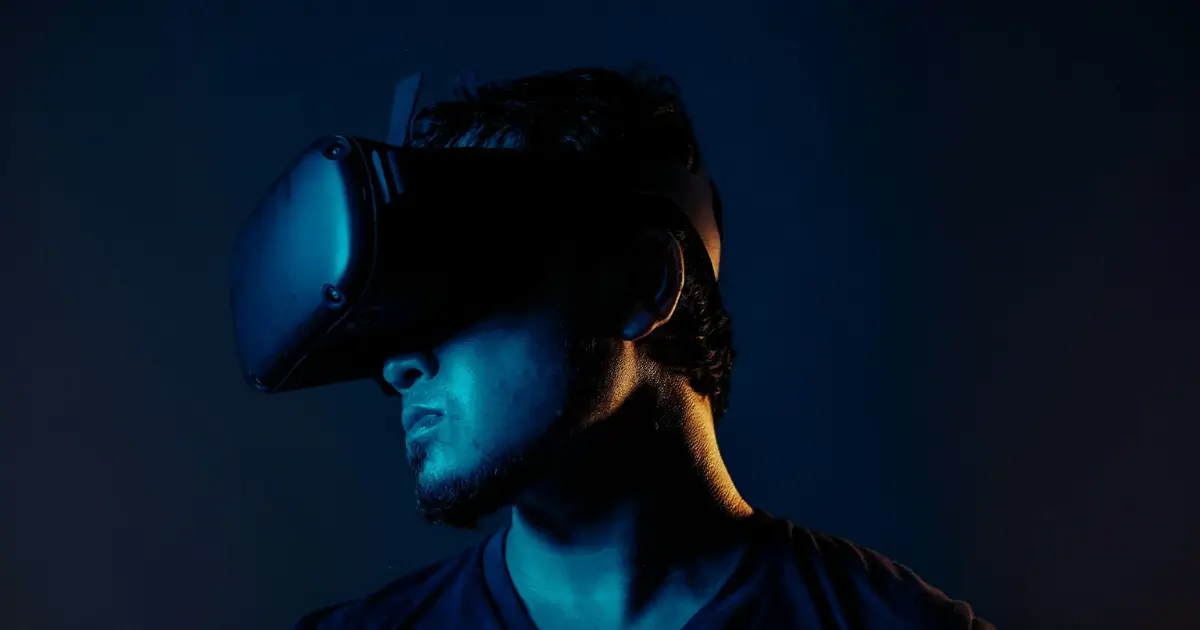Augmented Reality (AR) and Virtual Reality (VR) development can be a fun, but daunting challenge. Navigating the plethora of AR/VR development kits and frameworks out there can be intimidating for those starting their careers in this area of expertise. When developers leverage the right AR/VR software development kits (SDKs) and frameworks, they build immersive experiences that are both visually captivating and optimized for various AR/VR platforms and devices.
This blog post breaks down how these AR/VR development tools empower developers to create stunning 3D models, animations, and intuitive interactions for AR/VR 3D development:
[ez-toc]Building Immersive Worlds: AR/VR Development Kits and Frameworks
How can AR/VR development kits and frameworks empower developers to craft stunning 3D models, animations, and user interactions? Keep reading to find out the right AR/VR Software Development Kits (SDKs) and frameworks for you.
Development Kits: The Hardware Foundation
How to Choose the Best Hardware for Building AR/VR Apps
As a developer, selecting the right hardware is crucial for building effective AR/VR apps. Here’s a step-by-step guide:
- Define Your Use Case: Identify whether you are developing for AR, VR, or mixed reality (MR). This will help narrow down your hardware options.
- Evaluate Platform Compatibility: Ensure the hardware supports the platforms you aim to develop for (e.g., mobile, PC, standalone devices).
- Consider Performance Requirements: High-end projects may require hardware with superior graphics and tracking capabilities.
- User Experience Focus: Choose hardware that provides a comfortable and intuitive user experience.
- Check Developer Support: Opt for hardware with robust developer communities and extensive documentation.
Popular AR/VR Development Kits
AR/VR development kits provide the essential hardware needed to build immersive experiences. Here are some popular options:
- Meta Quest 2: An affordable VR headset known for its user-friendliness and extensive developer support for AR/VR SDKs.
- HTC Vive Pro 2: A high-end VR headset offering superior visuals and tracking capabilities for professional developers working on complex 3D projects.
- Microsoft HoloLens 2: A leading mixed reality (MR) headset that seamlessly integrates the real and virtual worlds, ideal for AR application development.
These kits typically include:
- Head-Mounted Displays (HMDs): The visual interface users wear to experience the AR/VR environment.
- Controllers: Tools for interacting with virtual objects and navigating the virtual space.
- Tracking Sensors: Capture user movement and orientation within the AR/VR environment.
- SDKs: Provide tools and resources specifically designed for developing applications for that particular hardware platform.
Frameworks: Building Blocks for AR/VR Apps
Leveraging Frameworks for Better AR/VR App Development
Software teams, including product, design, and engineering, can leverage AR/VR frameworks to enhance app development by:
- Accelerating Development: Frameworks provide pre-built libraries and components, reducing the time required to code from scratch.
- Ensuring Consistency: Using standardized components ensures consistent user experiences across different projects.
- Enhancing Collaboration: Frameworks allow different team members to work on various aspects of the project concurrently.
- Improving Performance: Optimized libraries ensure that applications run smoothly on target devices.
Popular Frameworks
AR/VR development frameworks offer pre-built code libraries and functionalities that streamline the AR/VR app development process. Here’s a comparison of some popular frameworks:
Framework |
Focus |
Key Features |
Platforms Supported |
Pros |
Cons |
Unity |
Game development, simulations, interactive experiences | Unity is a powerful engine for creating 2D, 3D, AR, and VR experiences. | Extensive platform support (mobile, PC, consoles, AR/VR) | User-friendly, extensive asset store, strong community support. | Can be resource-heavy, licensing costs for professional use. |
Unreal Engine |
Game development, cinematic experiences, architectural visualizations | Unreal Engine is feature-rich engine known for its high-fidelity graphics and visual effects capabilities. | Mobile, PC, consoles, AR/VR | Superior graphics, free for most uses, robust toolset. | Steeper learning curve, can be resource-intensive. |
XCode/ARKit (Apple) |
AR application development | XCode/ARKit is a native framework for developing AR experiences on Apple devices. | iOS, iPadOS | Seamless integration with Apple ecosystem, high performance. | Limited to Apple devices, requires knowledge of Swift/Objective-C. |
Android Studio/ARCore (Google) |
AR application development | ARCore is a native framework for building AR experiences on Android devices. | Android | Wide device support, strong integration with Google services. | Fragmentation across devices, requires knowledge of Java/Kotlin. |
Windows Mixed Reality Toolkit (Microsoft) |
Mixed reality application development | The Windows Mixed Reality Toolkit is a framework for creating mixed reality experiences for Microsoft HoloLens and other compatible headsets. | Windows | Strong integration with Windows ecosystem, versatile toolkit. | Limited to Windows devices, smaller developer community. |
Optimizing for Performance and Usability
To ensure optimal performance and usability of AR/VR applications, developers can implement the following steps:
- 3D Model Optimization: Use tools like Blender or Maya for polygon reduction and texture baking. This reduces the complexity of 3D models without sacrificing visual quality, ensuring smooth performance on various devices.
- Animation Optimization: Techniques like keyframe reduction and culling (removing unseen animations) can be employed. Use animation software such as Unity’s built-in tools to streamline playback and minimize resource usage.
- Spatial Interaction Design: Frameworks often provide pre-built components for common interactions like grabbing, throwing, and manipulating virtual objects. Utilizing these components ensures intuitive and consistent user experiences across different platforms.
- Platform-Specific Considerations: Be aware of the specific capabilities and limitations of each platform. For example, mobile AR experiences may require lower-poly models compared to high-end VR headsets. Test performance on target devices using platform-specific tools (e.g., XCode for iOS, Android Studio for Android).
Using AR/VR development kits, frameworks, and optimization techniques allows developers to create immersive experiences that are visually stunning, perform well, and offer intuitive user interactions across a range of platforms and devices. The right combination of tools and best practices ensures users can truly engage with the AR/VR world you’ve envisioned. Now get out there and make us proud!

International Marketing Leader, specialized in tech. Proud to have built marketing and business generation structures for some of the fastest-growing SaaS companies on both sides of the Atlantic (UK, DACH, Iberia, LatAm, and NorthAm). Big fan of motherhood, world music, marketing, and backpacking. A little bit nerdy too!



